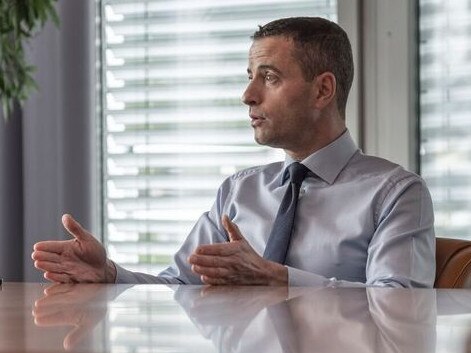Glencore CEO Gary Nagle reveals its energy costs in Australia are ‘double or more’ compared to the US, Canada, China and India
A global mining company’s CEO says its Australian energy bills are at least twice as much as what it pays in the US, Canada, China and India. See what that means for Australia.

National
Don't miss out on the headlines from National. Followed categories will be added to My News.
In a blunt warning about the rapidly rising cost of doing business in Australia, one of the world’s largest mining companies has revealed the price it pays for energy here is now at least twice that in the US, Canada, China and India.
Glencore is also sounding the alarm on high and unpredictable taxation, as well as complex and inconsistent project approval rules — particularly around emissions.
The CEO of the Switzerland-based behemoth Gary Nagle has delivered the brutal assessment in an interview with this masthead during a flying visit to Australia, during which he met with Queensland Premier David Crisafulli and NSW’s Minns government.
Mr Nagle was particularly impressed with the attitude of the Sunshine State’s new supremo.
Following his meeting with the Premier last week, Mr Nagle said: “The new Crisafulli Government has said they are open for business.”

That is in stark contrast to the former Labor government in Queensland, which had been panned for hiking royalty rates out of nowhere.
While the attitude of the new Liberal-National state government was a welcome change, Mr Nagle said “high royalties and the cost of power continue to be big issues for our sector in Queensland.”

Glencore, which is the world’s fifth-largest resources company with a market capitalisation of nearly $100 billion, employs more than 17,000 people in Australia across 22 mines. It is the country’s biggest producer of coal and also extracts copper, zinc, lead, nickel and cobalt.
Mr Nagle said the price the company pays for power in Australia is vastly greater than elsewhere in the world, making it a less attractive place for international businesses to invest.
“Energy costs for Glencore’s metals business in Queensland are about double or more than those in India, China, Canada and the US,” he told this masthead.
“As a result, Australia’s competitiveness is being impacted.”
Another major hindrance is inconsistencies in rules, Mr Nagle warned.
For example, while the Albanese federal Labor government has a 2030 emissions reduction target of 43 per cent compared to 2005 levels, in NSW the goal is a 50 per cent cut – which the Minns Labor government recently enshrined in law.
That is creating an extra hurdle in an extension application Glencore and joint venture partner Yancoal have submitted for their Hunter Valley Operations (HVO) coal mine.
The partners began the process of seeking approval for the HVO extension in 2020.
But earlier this year the state Environment Protection Agency notified the JV of fresh concerns about the application given NSW was not on track to meet the state’s newly minted emissions target.

A clearly frustrated Mr Nagle said: “We would like to see a single set of rules to play by.”
“Project approvals are a key issue for us in NSW, in particular the HVO continuation project.”
He argued that the negative attitude to coal in Australia was increasingly out of step with other parts of the world.
“Many stakeholders globally are now taking a more pragmatic view about coal,” Mr Nagle said.
A Minns government spokeswoman said the number of objecting submissions received on the project meant the Independent Planning Commission had become the “consent authority.” Also, she said, “there is bipartisan commitment to achieving our legislated emissions reduction targets by 2030, 2035 and 2050”.





